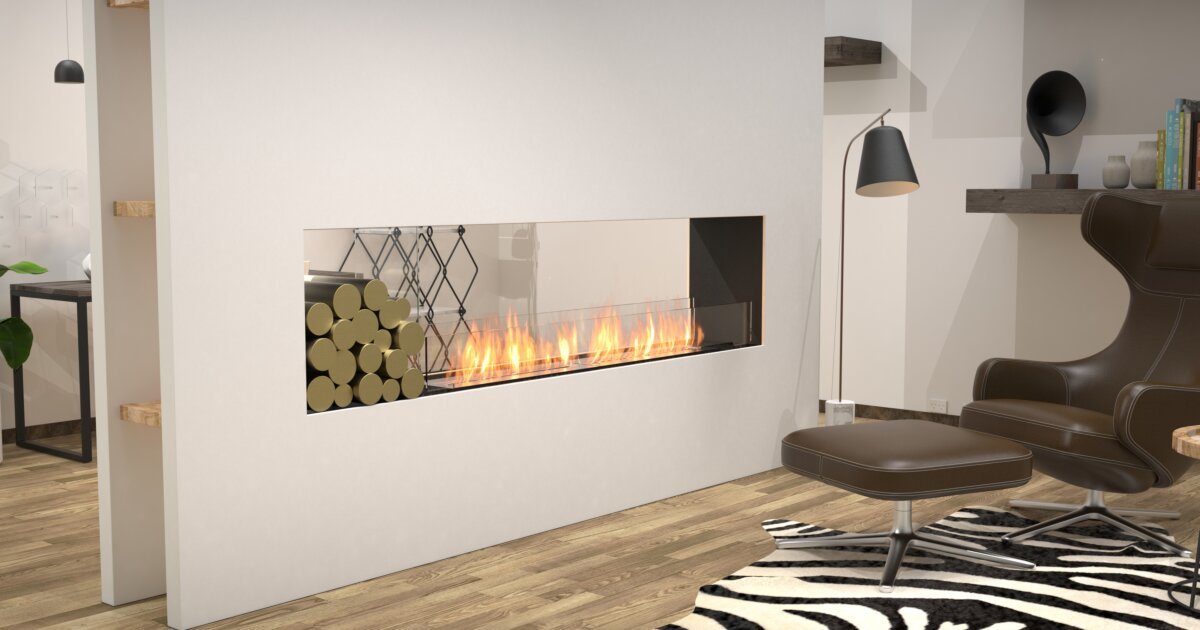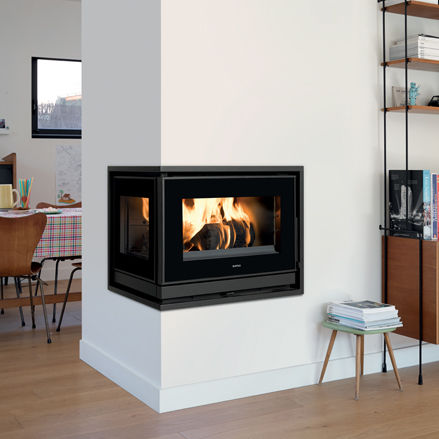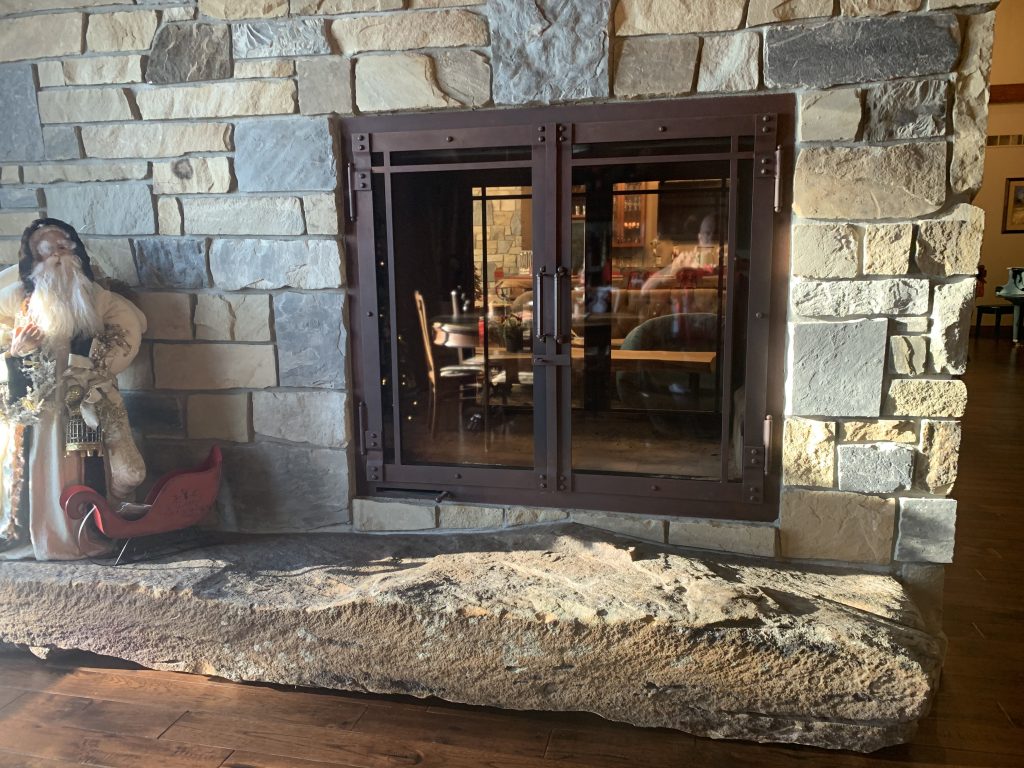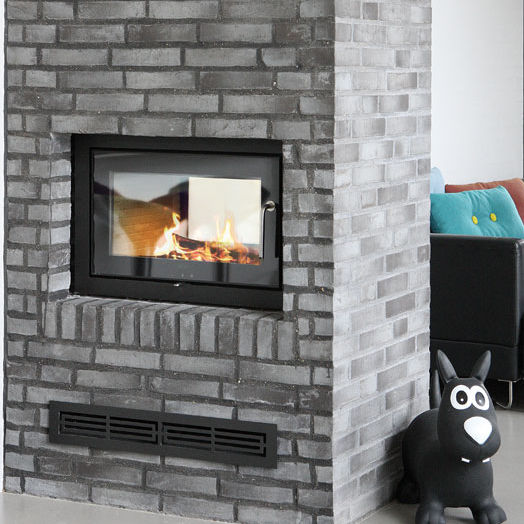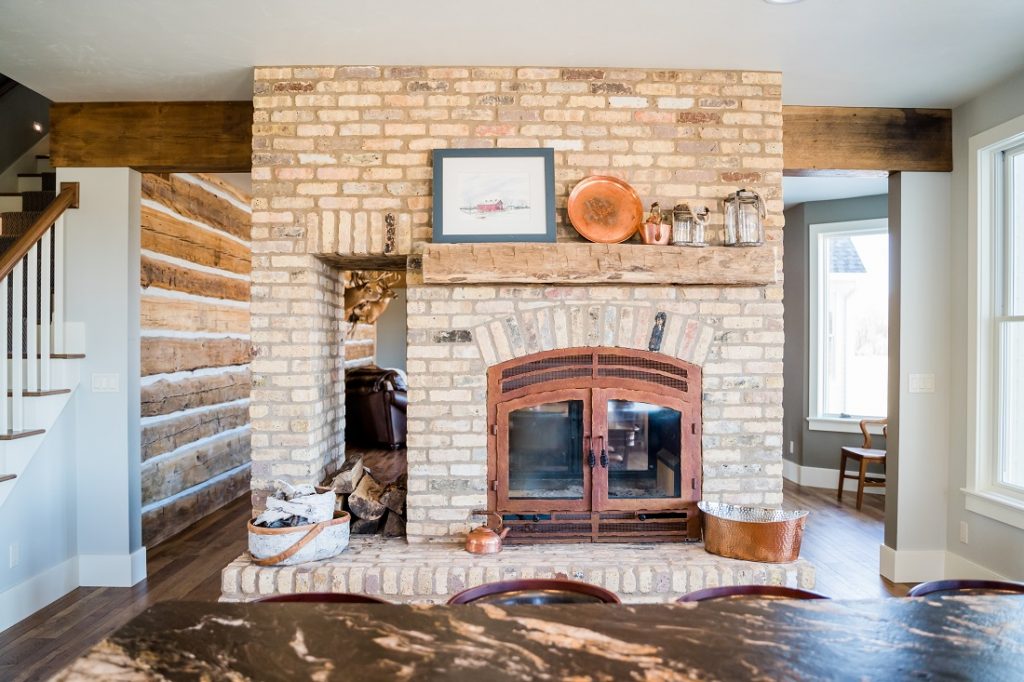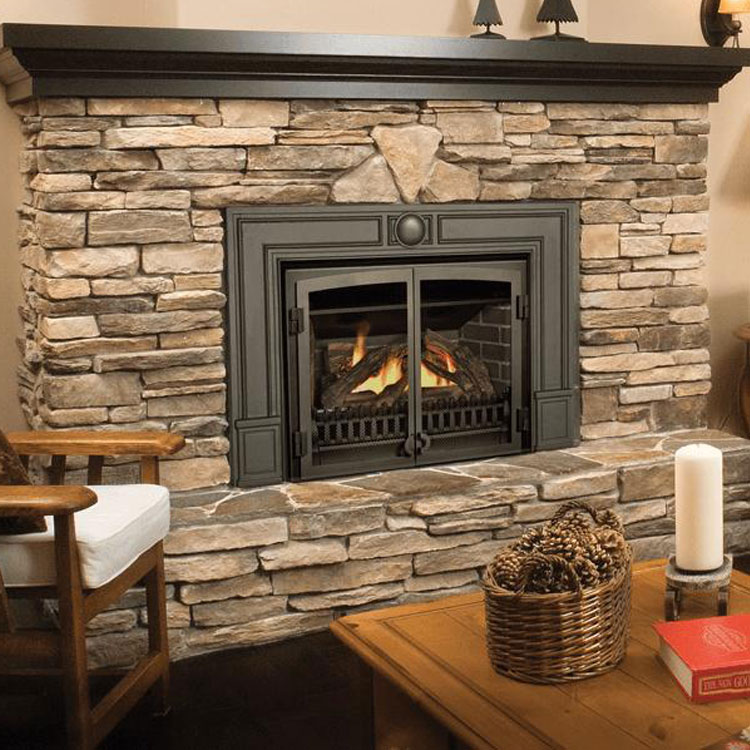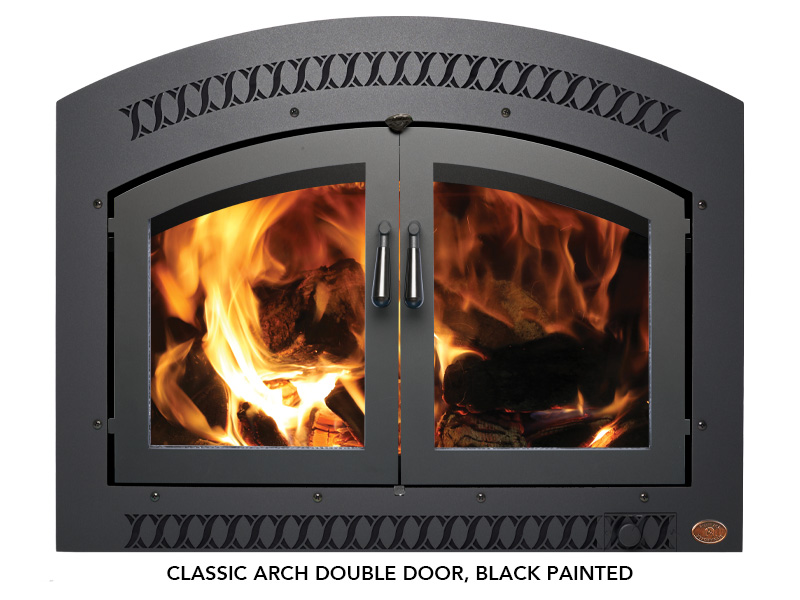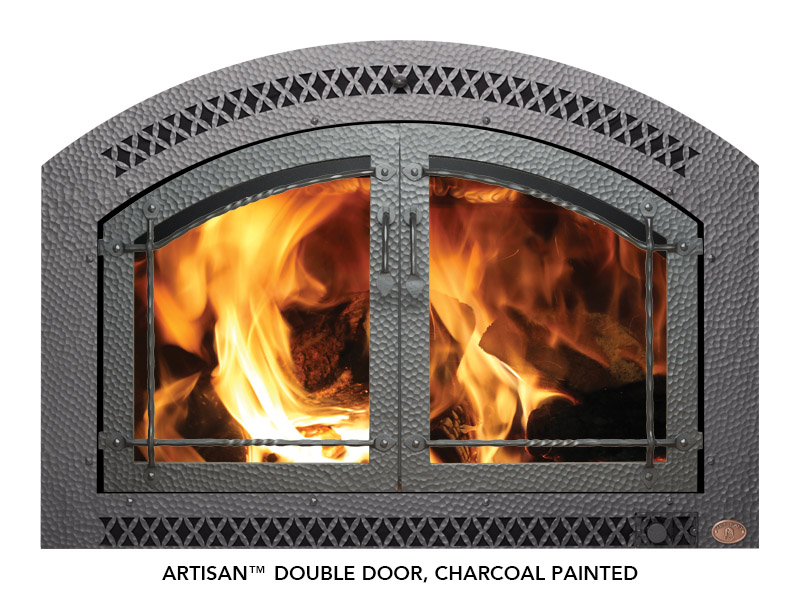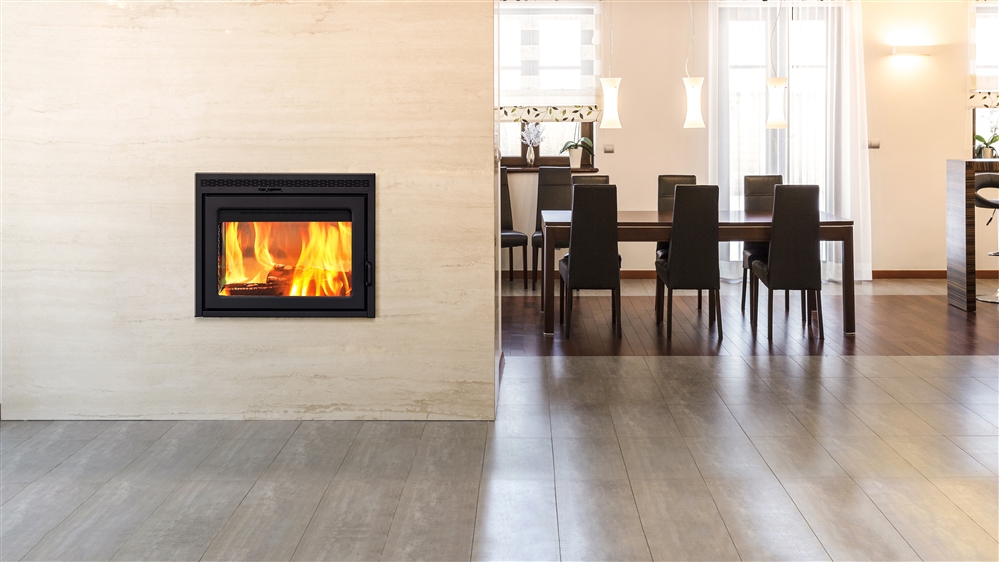When I decided to upgrade my traditional fireplace, I discovered the practical benefits of double door fireplace inserts. These units combine the charm of an open hearth with improved efficiency and safety features that modern homeowners need. After installing one in my living room last winter, I was impressed by how the dual doors transformed both the fireplace’s functionality and aesthetic appeal. Double door inserts offer better heat control, easier maintenance, and enhanced viewing compared to single door models. Here’s what I learned about choosing, installing, and living with a double door fireplace insert that could help you make an informed decision for your home.
Understanding Double Door Fireplace Inserts
Double door fireplace inserts are essentially self-contained fireboxes that fit into existing masonry fireplaces. What sets them apart is their two-door design, which typically features glass panels that allow viewing while containing sparks and smoke. My model has hinged doors that open fully for easy access when loading wood or cleaning ashes. The doors create an airtight seal when closed, dramatically improving heat output compared to my old open fireplace. This design prevents warm room air from escaping up the chimney while radiating heat into the living space.
The viewing experience with double doors surprised me most. The wide glass panels provide an unobstructed view of the flames from various angles in the room. My family enjoys gathering around the fire without worrying about sparks escaping onto the carpet. The doors also contain smoke effectively – no more occasional backdrafts filling the room with haze like we experienced with the open hearth. Some models even allow independent operation of each door, giving flexibility when adding logs or adjusting airflow.
Not all double door inserts are created equal, though. Basic models may have thinner glass that clouds over time, while premium versions use high-temperature ceramic glass that stays clearer longer. The door sealing mechanisms also vary in quality – mine has a robust gasket system that maintains a tight seal even after repeated heating cycles. These differences affect both performance and longevity, making it worth investing in quality construction if you plan to use the insert regularly.
Heat Efficiency and Performance
The efficiency gains from switching to a double door insert were immediately noticeable. Where my open fireplace previously sucked warm air up the chimney, the insert now radiates consistent heat throughout the room. The sealed combustion system directs airflow for more complete burning, meaning I use less wood for more heat. On cold nights, the insert can maintain comfortable temperatures in my 400-square-foot living room without needing to crank up the furnace.
Temperature control is another advantage. The doors allow me to regulate how much air enters the firebox, controlling burn rate and heat output. When I want a quick, hot fire, I open the air vents fully. For overnight burns, I reduce airflow to create longer-lasting embers. The glass stays clean enough to monitor the fire’s status at a glance. This level of control was impossible with my old fireplace, where adjusting the damper was my only option.
There are some limitations to consider. The insert’s heat output depends on proper installation and chimney condition. I had my chimney professionally lined and insulated to maximize efficiency. The radiant heat is directional too – strongest facing the insert and diminishing further away. I use ceiling fans to help circulate warmth throughout the room. While not a whole-house heating solution, my insert provides comfortable zone heating that reduces reliance on other heat sources.

Installation Requirements and Process
Installing a double door fireplace insert isn’t a simple DIY project in most cases. Proper installation requires assessing your existing fireplace’s dimensions, chimney condition, and clearance to combustibles. I hired a certified installer who confirmed my masonry fireplace could accommodate the insert safely. They installed a stainless steel liner in my chimney to improve draft and prevent creosote buildup – a critical safety upgrade many older homes need.
The physical installation took about six hours from start to finish. The crew removed my old damper, measured and cut the liner, then carefully positioned the heavy insert using special lifting tools. Proper leveling was crucial to ensure the doors would seal correctly. The final step connected the liner to the insert’s flue collar and sealed all joints with high-temperature mortar. Seeing the transformation from drafty hearth to efficient heater was remarkable.
Post-installation inspections are equally important. My installer returned after a week of use to check all seals and clearances, making minor adjustments to the door alignment. They also walked me through proper operation and maintenance procedures. While the professional installation added to the project cost, the peace of mind knowing everything was done correctly was worth every penny. Attempting this installation myself could have created safety hazards or voided the manufacturer’s warranty.
Design and Aesthetic Considerations
Double door inserts come in various styles to match different home décors. I chose a black cast iron model with nickel accents that complements my traditional living room. The arched doors mirror the shape of my original fireplace opening, maintaining the historic character while adding modern functionality. Other options include sleek steel designs for contemporary spaces or ornate brass-trimmed models for formal rooms.
The viewing area dimensions vary between models too. My insert has tall, narrow doors that maximize glass area within my existing fireplace’s proportions. Some feature wider doors that provide panoramic fire views, ideal for larger fireplaces. The glass itself can be clear or tinted – I preferred clear for the most natural flame presentation. Decorative door handles and hinges add subtle style elements that elevate the overall look.
Integrating the insert with my existing mantel and surround required some planning. The insert’s faceplate had to align properly with the fireplace opening for a flush fit. I considered extending the hearth slightly to meet updated safety codes for the more efficient insert. These details matter for both aesthetics and function – a well-proportioned installation looks intentional rather than makeshift. The right insert should enhance your fireplace’s architecture, not fight against it.
Maintenance and Cleaning
Regular maintenance keeps my double door insert operating safely and efficiently. I clean the glass doors weekly during heavy use with a specialized ceramic glass cleaner. This prevents a cloudy buildup that would obscure the fire view. The door gaskets need occasional inspection too – I check for wear by closing a dollar bill in the door; if it slides out easily, the gaskets may need replacement.
Ash removal is simpler than with my old fireplace thanks to the insert’s ash drawer. I empty it when about one-third full to maintain proper airflow. Annual professional cleaning removes creosote from the chimney liner that I can’t reach myself. I also vacuum around the insert’s vents and fans (if equipped) to prevent dust buildup that could impair performance.
Seasonal maintenance prepares the insert for winter use. Each fall, I inspect all seals and connections before the first fire. A flashlight check of the chimney liner ensures no animals have nested inside during warmer months. Taking these precautions gives me confidence the insert will perform reliably when needed most. Proper care extends the unit’s lifespan and maintains its efficiency year after year.
Cost Comparison and Value
Double door fireplace inserts represent a significant investment, but one that pays dividends in comfort and energy savings. My mid-range model cost about $2,500, with professional installation adding another $1,800 including the chimney liner. While not inexpensive, this compares favorably to the $10,000+ some friends have spent on full fireplace replacements. The insert’s efficiency improvements should recoup some costs through reduced heating bills over time.
Long-term value extends beyond financial considerations though. The insert has become my home’s focal point during winter months, creating a cozy atmosphere we enjoy daily. The added safety features provide peace of mind, especially with young children in the house. Unlike some home improvements that lose appeal over time, my appreciation for the insert’s benefits has only grown with use.
When comparing options, consider both upfront costs and ongoing value. Cheaper inserts may lack quality components that affect performance and durability. My research found that investing in a reputable brand with good warranty coverage provides better satisfaction over the product’s lifespan. For homeowners who value both ambiance and practicality, a quality double door insert delivers on multiple fronts.
Can a double door insert be installed in any fireplace?
Most masonry fireplaces can accommodate a double door insert with proper measurements and preparation. The existing fireplace must have adequate depth and height for the insert body, plus proper chimney condition for safe operation. My installer measured multiple dimensions before confirming compatibility, including the fireplace opening, smoke chamber, and flue size. Zero-clearance prefabricated fireplaces typically can’t accept inserts unless specifically designed for them. A professional assessment determines whether your fireplace can safely house an insert and what modifications might be needed.
How much heat can I expect from a double door insert?
Heat output varies by model size and fuel type, but most double door wood inserts produce 30,000-70,000 BTUs – enough to heat 800-2,000 square feet depending on insulation and climate. My medium-sized insert comfortably heats my 400-square-foot living room and spills warmth into adjoining spaces. The actual heat you’ll experience depends on factors like insert efficiency, wood quality, chimney draft, and home insulation. Unlike open fireplaces that lose most heat up the chimney, inserts radiate 60-80% of their heat into the room, making them substantially more effective at space heating.
Are double door inserts safe for homes with children?
Double door inserts are significantly safer than open fireplaces when properly installed and used. The glass doors remain cool enough to prevent instant burns (though they still get warm), and the sealed design contains sparks completely. My model’s doors lock closed, preventing young children from opening them unexpectedly. The surrounding surfaces do get hot during operation, so maintaining proper clearances to combustibles and using safety gates if needed is important. With reasonable precautions, our insert has proven safe with both children and pets in the house.
How often do the glass doors need cleaning?
Cleaning frequency depends on usage and burning techniques. With proper hot fires using seasoned wood, my doors stay relatively clean for 5-7 burns before needing attention. Smoldering fires create more creosote that clouds the glass faster. I clean mine weekly during peak season using a damp newspaper dipped in ash (a surprisingly effective method) or specialized glass cleaner. Some high-end inserts feature air wash systems that help keep glass cleaner longer by directing airflow across the interior surface. Regular cleaning maintains both the view and the insert’s aesthetic appeal.
Can I install a blower with my double door insert?
Many double door inserts can accommodate optional blower kits that improve heat circulation. My model has a built-in blower that distributes warm air more effectively throughout the room. These blowers operate quietly on low settings but move substantial air when needed. Not all inserts support blowers though – check manufacturer specifications before purchasing. Proper blower installation is important to avoid interfering with the insert’s combustion air supply. The added convection heat makes a noticeable difference in how evenly the room stays warm.
What’s the lifespan of a quality double door insert?
A well-maintained double door insert should last 20-30 years with proper care. The cast iron or steel bodies are extremely durable, while replaceable components like glass, gaskets, and baffle plates extend the unit’s functional life. My installer said the chimney liner may need replacement after 15-20 years depending on usage and wood quality. Higher-end models often use thicker materials and better components that last longer. Following the manufacturer’s maintenance schedule and burning only seasoned wood are the best ways to maximize your insert’s lifespan and performance.
Majestic Designer Series See-Thru Radiant Wood Burning Fireplace
Elite Made in America Fireplace Xtrordinair
Fireplace & Double Sided Fireplace
Elite Made in America Fireplace Xtrordinair
Fireplaceinsert.com, supreme double sided fireplace
Related Posts:
